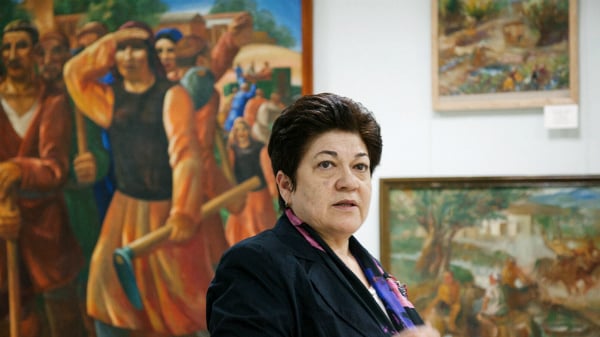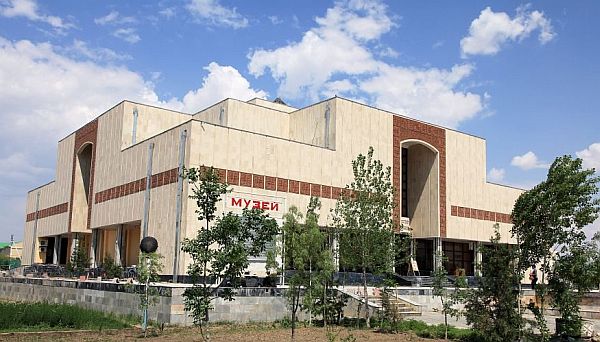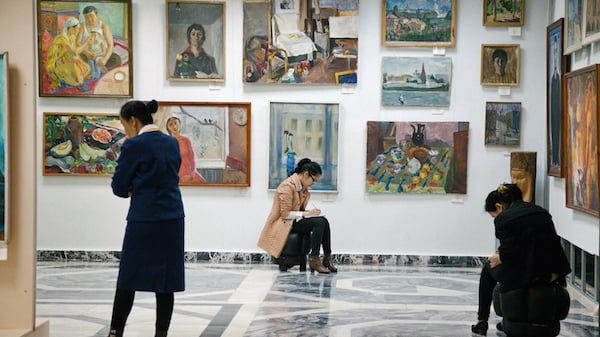Art World
Abrupt Dismissal of Uzbek Museum Director Sparks Controversy
Could the dismissal be politically motivated?

Photo: Timur Karpov via Al Jazeera
Could the dismissal be politically motivated?

Lorena Muñoz-Alonso

The Uzbek government abruptly sacked the director of the Savitsky museum, Marinika Babanazarova, on Monday.
Babanazarova was not given an official reason for her dismissal. She told the BBC that the news came to her as a “complete surprise.”
She also said she believed the decision was motivated by accusations that she had allegedly stolen original paintings and replaced them with fakes. She told the BBC the accusations were “absurd” and with “no grounds,” and part of an attempt to “discredit the museum’s leadership,” adding, “somebody just wants to remove me.”
Meanwhile, museum workers have issued a statement protesting Babanazarova’s dismissal and urged the Ministry of Culture and Sports of the Republic of Uzbekistan to rectify the decision. According to the BBC, the staff’s bold move is rare in a country where expressions of dissent are not tolerated by the government.
The letter, which was published in full by Artnews, stresses Babanazarova’s honesty and declares that the museum’s art collection is “safe and sound:”
[…]
The keepers of the museum with full confidence take responsibility to assert that the entire collection is intact.
[…]
The museum staff in no way doubt the decency of the Director, Marinika Babanazarova. At the head of the team are people who have worked with I. V. Savitsky for many years and have worked hard to bring the huge collection collected by him in order. There is the belief, that there are people that it benefits to discredit the good name of the Director of the museum and its staff now, when the collection of the Museum of Arts named after Savitsky gained world fame.
[…]

The Savitsky museum in Nukus, Uzbekistan
Photo: via Advantour
Babanazarova had been at the helm of the museum since the death of Igor Savitsky in 1984. The museum’s original founder handpicked Babanazarova, who was working as a curator in the museum at the time, to succeed him.
Earlier this year Babanazarova told Al Jazeera that, although she first felt terrified about “the feeling of responsibility that fell on me” at the time of her appointment, she continued to preserve the collection and promote the museum internationally.
Today, the museum is thriving under her leadership; it’s expanding into two new buildings and attracts visitors from around the world.
The Savitsky museum is recognized as the world’s second largest collection of Russian avant-garde art, with works by Russian masters such as Kazimir Malevich, Wassily Kandinsky, and Marc Chagall.

The Savitsky Museum’s fantastic collection has plucked it from obscurity
Photo: Timur Karpov via Al Jazeera
In the 1960s, Savitsky recovered and salvaged a trove of this “forbidden art,” banished from the cannon of Russian art under Communism, which family members of banned artists kept stashed away in basements and attics across Uzbekistan and the former Soviet Union.
The museum, also known as the Karakalpak State Art Museum, houses a collection of over 90,000 items, including graphics, paintings, and sculptures, as well as thousands of artifacts, textiles, and jewelry.
Related stories:
How Did a Billion-Dollar Trove of Russian Avant-Garde Art End Up in Uzbekistan?
Museum Staff Replaced Collection with Forgeries, Then Sold Originals